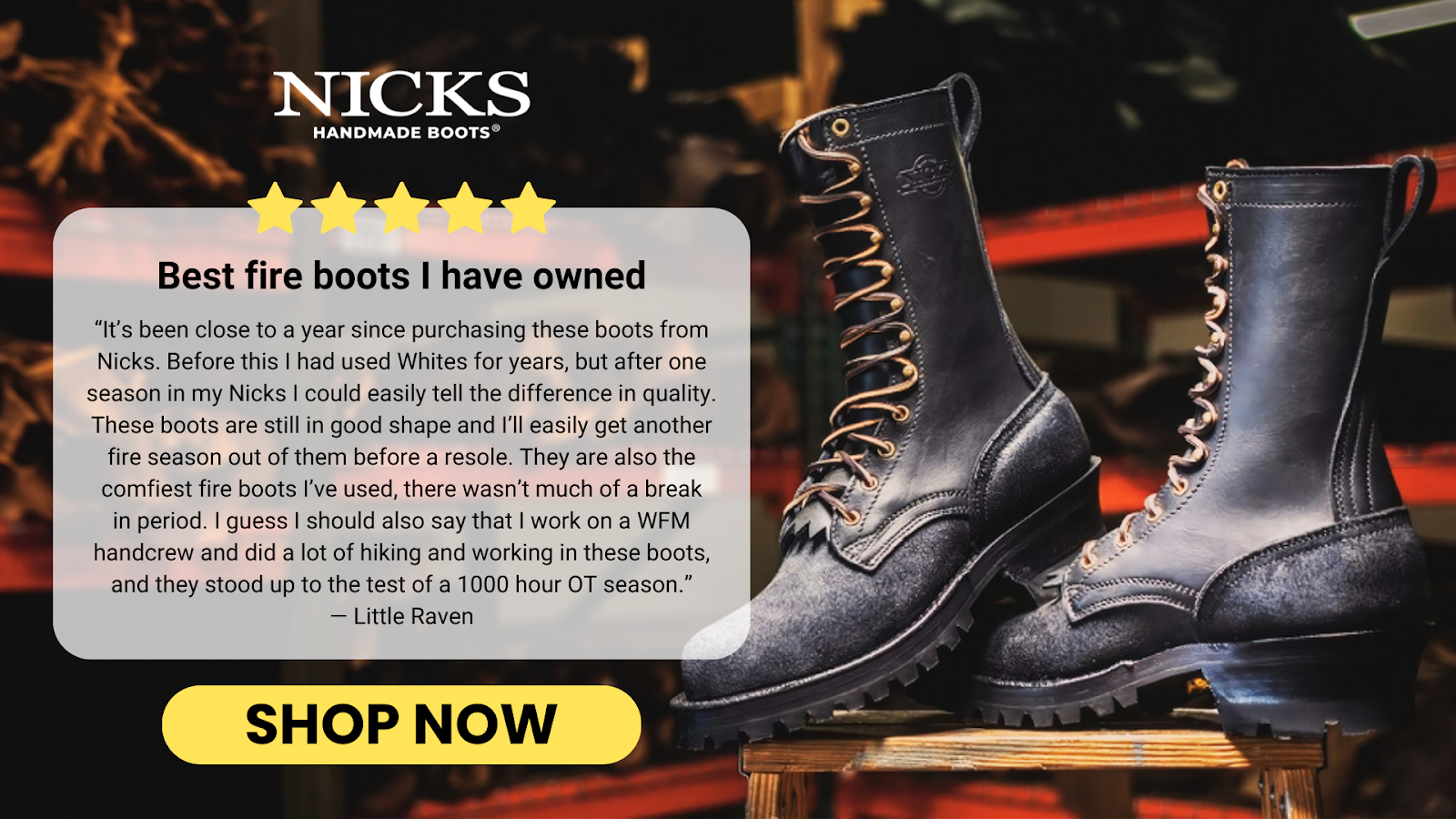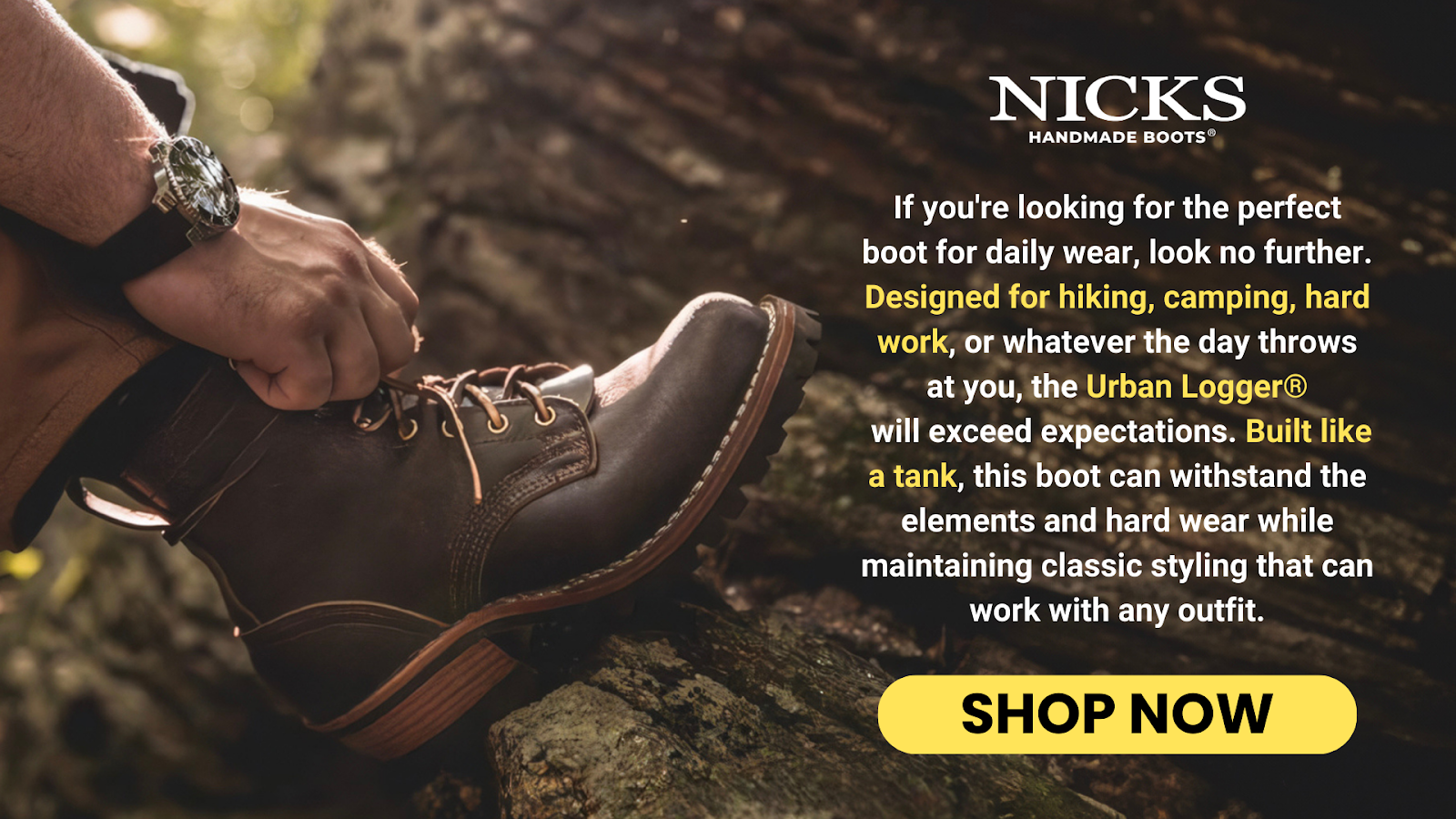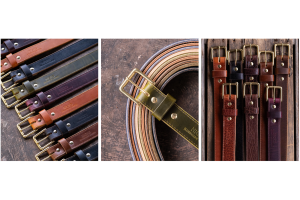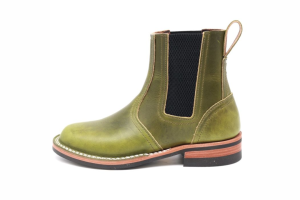Hiking Boots Vs. Work Boots: What’s The Difference?

Key Takeaways:
- Functionality And Purpose: Hiking boots offer flexibility and traction outdoors, while work boots focus on protection and durability in hazardous environments.
- Comfort: Hiking boots prioritize long-distance comfort with cushioning and lightweight materials, while work boots provide sturdy, supportive construction for extended hours of work.
- Safety Features: Work boots include steel toes, slip-resistant outsoles, and other safety features essential for job sites, whereas hiking boots focus on protection against natural elements.
It’s in the feel.
Although hiking boots and work boots may look similar at first glance, choosing the wrong pair can lead to discomfort, inefficiency, or even injury. Whether scaling a mountain or working at a construction site, the right boots are crucial for performance and protection.
At Nicks Boots, we craft durable, high-quality footwear for specific purposes. Thanks to decades of experience in bootmaking excellence, our boots are trusted by outdoor enthusiasts and hardworking professionals alike.
In this article, we’ll explain the key differences between hiking boots and work boots so you can find the right fit for your needs.
What Are Hiking Boots?
Hiking boots are specifically engineered for trekking through various outdoor landscapes, from gentle trails to rocky, uneven terrains. Designed for long-distance walking, they offer critical features like durable outsoles for better grip on different surfaces and sturdy ankle support to prevent injuries such as sprains. Many hiking boots also incorporate waterproof or breathable membranes, ensuring your feet stay dry and comfortable, regardless of the weather conditions.
The construction of hiking boots focuses on providing comfort and protection for extended use. The cushioning and shock-absorbing materials help reduce foot fatigue, making them suitable for long hikes and challenging trails. The soles are often reinforced with aggressive treads or lugs for better traction on slippery or rough surfaces. For casual or experienced mountaineers, hiking boots are built to handle tough environments while maintaining foot safety and endurance.


What Are Work Boots?
Work boots are built to endure harsh work environments, providing protection and durability on job sites such as construction, manufacturing, and industrial settings. But that’s different than climbing the foothills of a mountain. Unlike hiking boots, work boots protect your feet from hazards like falling objects, sharp debris, or slippery surfaces. Many work boots feature reinforced toe caps — commonly steel or composite toes — to shield the toes from impacts and slip-resistant outsoles for added safety on uneven or slick surfaces.
In addition to safety features, work boots are designed for long-term wear and comfort. Made from tough materials like full-grain leather, they can withstand heavy use while providing support through cushioned insoles and moisture-wicking liners. Some work boots also offer electrical hazard protection, making them essential for professionals who require safety and comfort during long work hours. With their rugged construction, these boots are made to last through the daily grind.
Footwear Maintenance: How To Care For Hiking Vs. Work Boots
Cleaning Your Hiking Boots
After every hike, it is essential to remove dirt, mud, and debris from your hiking boots. Use a soft brush or cloth to remove dirt from seams and soles. If your boots are waterproof, reapply waterproofing spray or wax to maintain the barrier. Hiking boots from Nicks Boots are made from high-quality leather and materials, so regular cleaning prevents premature wear and ensures long-lasting durability.
Conditioning Leather Hiking Boots
Leather hiking boots require conditioning to maintain their suppleness and prevent cracking. A leather conditioner specific to the type of leather your boots are made of will help keep the leather hydrated. Nicks Boots hiking products, known for their craftsmanship, benefit from regular conditioning to prolong the boot’s natural resilience.
Cleaning Your Work Boots
Work boots accumulate dirt, oil, and sometimes hazardous chemicals that must be cleaned off after every use. Scrub them down using a brush, and wipe with a damp cloth for a deeper clean. For tougher stains or chemicals, use a leather-safe cleaner.
Conditioning And Repairing Work Boots
Like hiking boots, work boots require conditioning to keep the leather soft and durable. Regularly applying a leather conditioner helps to protect the boot from drying out and cracking under intense work conditions. Nicks Boots work boots are designed to last, but it’s also wise to check the soles and stitching periodically for any signs of wear. Timely repairs can extend the lifespan of these investment pieces significantly.
When To Choose Hiking Boots
Designed For Rugged Terrain
Hiking boots are designed to handle uneven, rocky, or challenging terrains. Their soles offer excellent traction, helping you maintain stability on steep or slippery trails. These boots often feature reinforced ankle support, which reduces the risk of injury during long hikes. Nicks Boots hiking options are crafted with rugged durability, offering long-lasting protection for outdoor adventures.
Long-Term Investment For Hikers
Hiking boots are a great investment for those who spend significant time outdoors, as they are built to withstand the wear and tear of the trail. While they may cost more upfront, the durability of well-crafted hiking boots saves you from frequent replacements. Nicks Boots focuses on craftsmanship, making their hiking boots reliable and long-lasting. With proper care, these boots can endure years of regular use, making them a valuable investment for serious hikers.
When To Choose Work Boots
Built For Tough Work Environments
Work boots are designed to withstand harsh environments, including construction sites, factories, and farms. These boots offer enhanced protection against heavy objects, sharp materials, or extreme weather conditions. Work boots with steel toes and reinforced materials focus on safety and durability. Nicks Boots offers handcrafted work boots for strength and durability, making them ideal for professionals who need footwear that can handle demanding jobs.
Superior Durability For Daily Use
Work boots are built to handle daily wear in tough conditions, making them essential for physically demanding jobs. Materials like full-grain leather and reinforced stitching ensure the boots can endure years of hard labor. While hiking boots focus on flexibility, work boots emphasize maximum durability, which is crucial for safety and longevity. Nicks Boots work boots are investment pieces, offering long-term value with their superior construction and lasting durability.


Final Thoughts
When choosing between hiking boots and work boots, the decision is about understanding each type's specific functionality. Hiking boots are designed to enhance your outdoor experience, providing the support, flexibility, and protection needed for rugged terrains. On the other hand, work boots are built to endure harsh job sites, offering superior durability and safety features to keep your feet secure in demanding conditions.
Read also:
Frequently Asked Questions About Hiking Boots Vs Work Boots
What is the primary difference between hiking boots and work boots?
Hiking boots are designed for outdoor terrains and focus on flexibility, lightweight construction, and traction, while work boots are built for durability and safety in industrial environments and often feature steel toes and slip-resistant soles.
Can hiking boots be used for work?
While hiking boots can offer comfort and traction, they lack the protective features like reinforced toe caps found in work boots, making them less ideal for hazardous work environments.
Are work boots suitable for hiking?
Work boots can be worn for hiking in a pinch, but their heavy build and lack of flexibility may cause discomfort over long distances, especially on uneven terrains.
Which boot offers better ankle support: hiking or work boots?
Both types offer ankle support, but hiking boots provide more flexibility and cushioning, essential for navigating uneven outdoor terrains. Work boots, however, focus on stability and protection in flat work environments.
What materials are used in hiking boots versus work boots?
Hiking boots typically use lighter materials, while work boots use heavier materials, like full-grain leather, for enhanced durability and protection.
Do hiking boots have safety features like work boots?
Hiking boots offer protection against outdoor elements, such as water and sharp rocks, but they generally lack safety features like steel toes and puncture-resistant soles found in work boots.
Are hiking boots waterproof, and how do they compare to work boots in wet conditions?
Many hiking boots have waterproof membranes to dry feet in wet outdoor conditions. Work boots may also be waterproof, but they prioritize durability and protection from workplace hazards like oil and chemicals.
Which type of boot is more comfortable for long wear?
Hiking boots are typically more comfortable for long-distance walking due to their lightweight design and cushioned insoles. In contrast, work boots focus on comfort during long hours of standing or walking in industrial settings.
How does the traction differ between hiking boots and work boots?
Hiking boots have deep treads or aggressive lugs for superior traction on varied, uneven terrains. Conversely, work boots are designed with slip-resistant outsoles to grip flat, slick surfaces such as warehouse floors.
Which boots are more durable: hiking boots or work boots?
Work boots are generally more durable because they are built to withstand harsh work environments with materials like full-grain leather and reinforced stitching. Hiking boots prioritize lighter, flexible materials suitable for outdoor conditions but may not be as long-lasting under industrial use.




